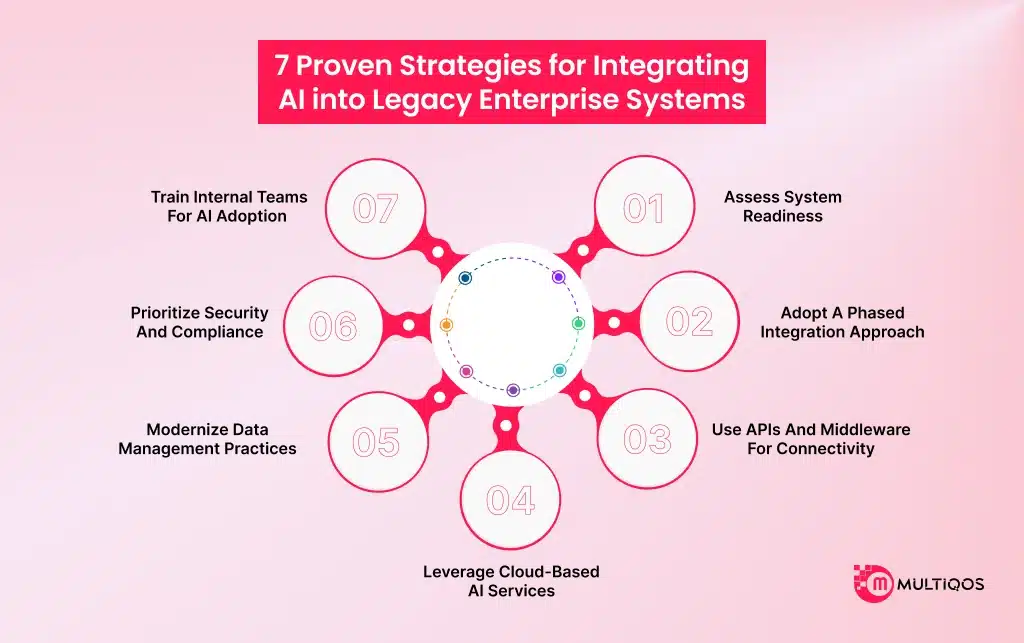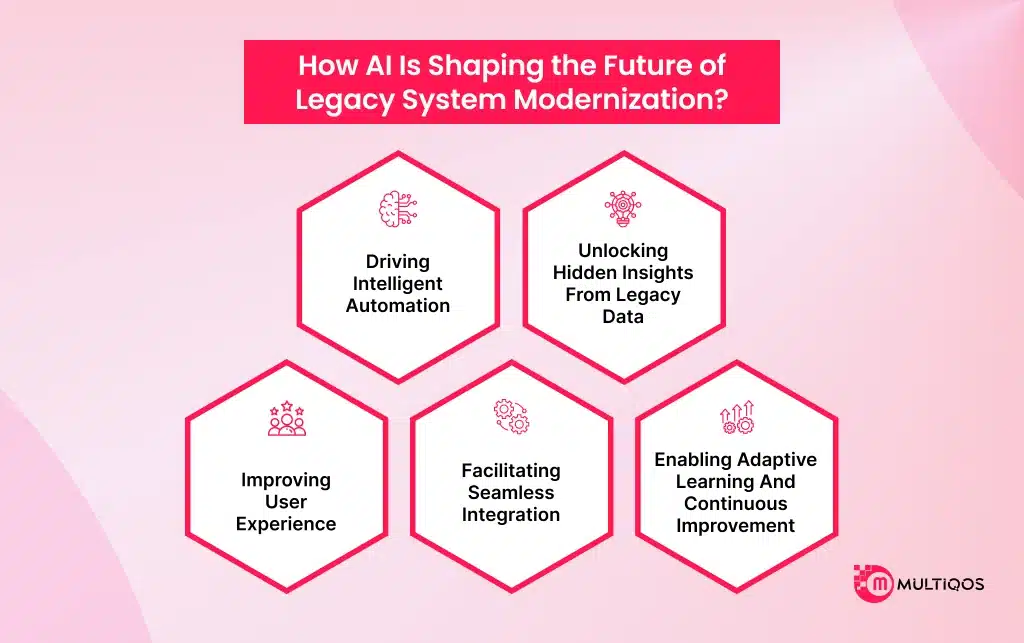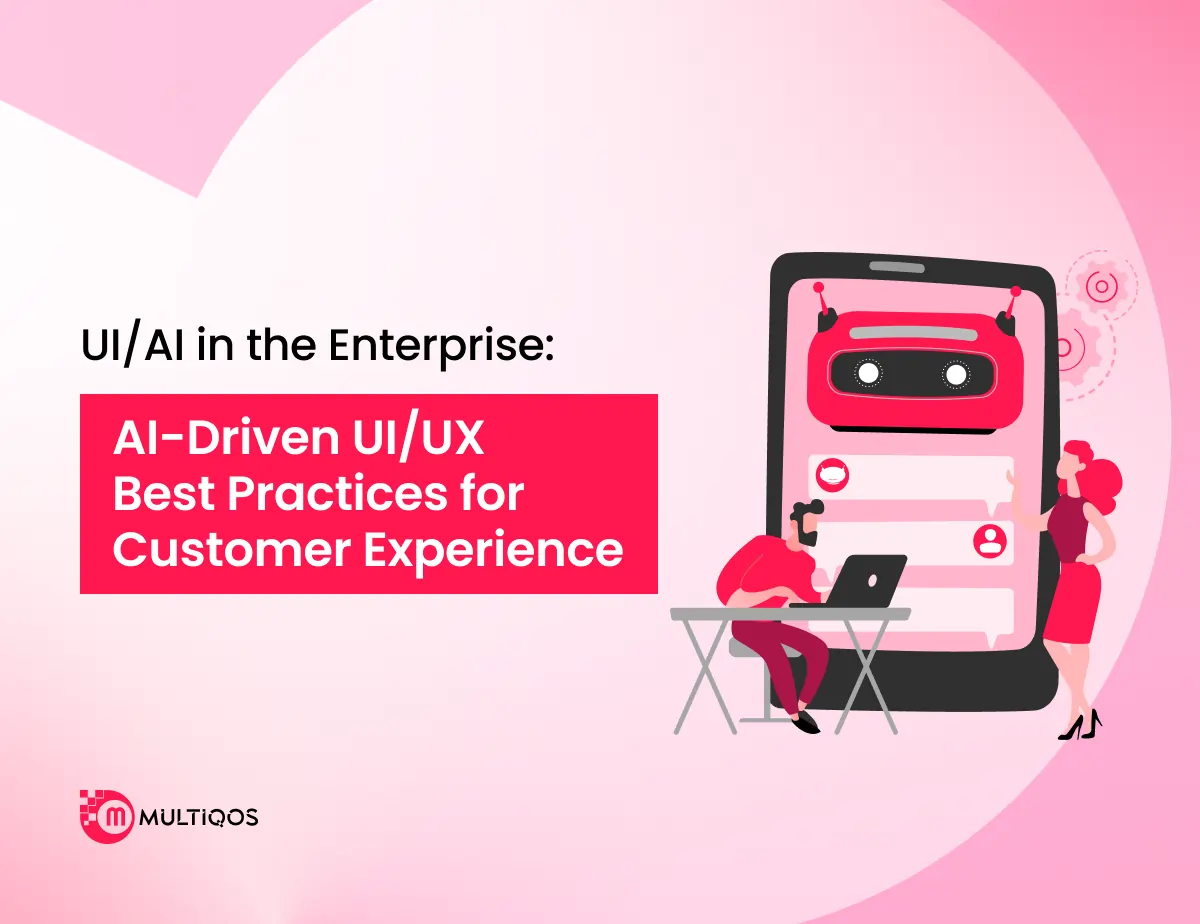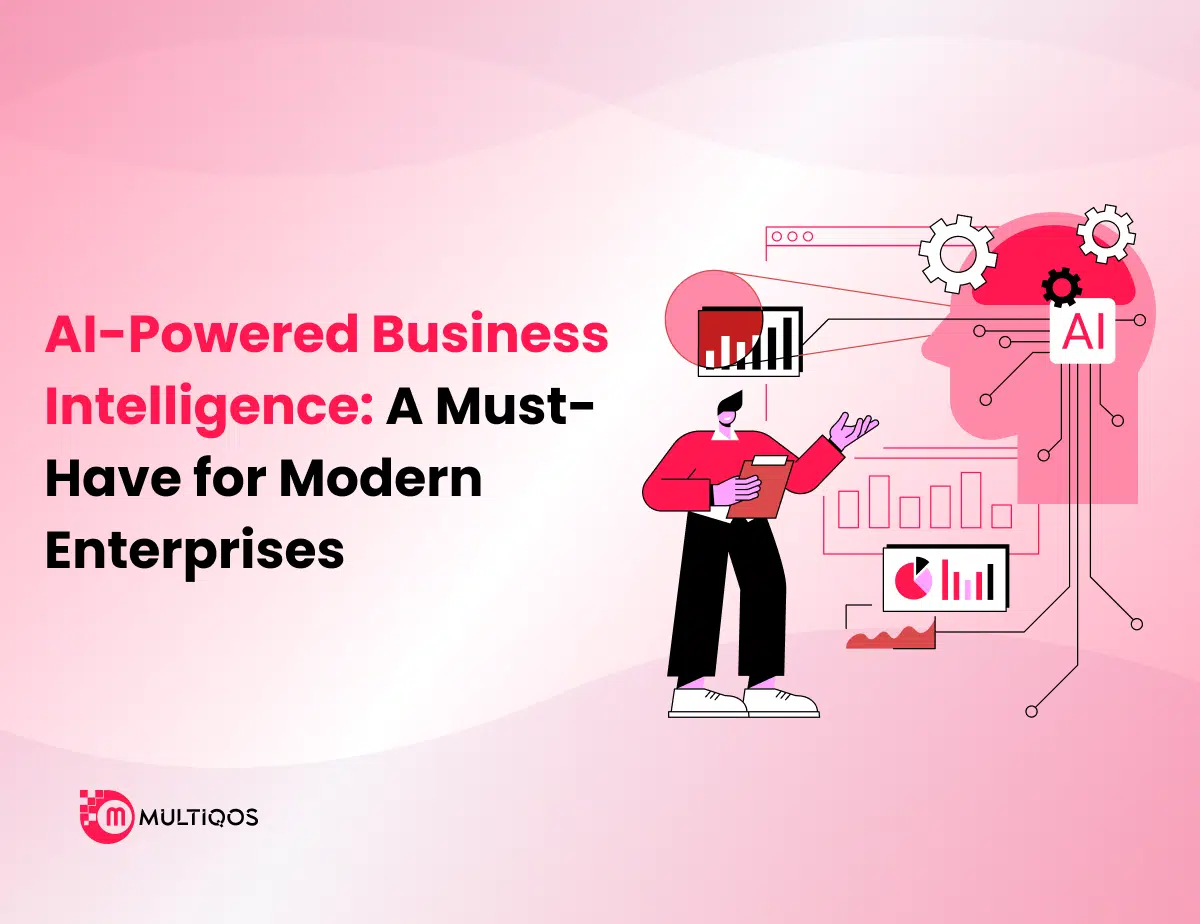AI and Legacy Systems: Strategies for Seamless Integration and Transformation

Summary:
Integrating AI into legacy enterprise systems is a critical challenge many organizations face as they strive to modernize operations and stay competitive. This blog explores effective strategies for seamless AI integration without disrupting existing infrastructure.
From assessing legacy system readiness and choosing the right AI tools to implementing phased rollouts and ensuring data compatibility, we cover best practices that help enterprises transform outdated systems into intelligent, future-ready platforms. Discover how to overcome common obstacles, leverage AI for enhanced decision-making, and drive business innovation while preserving core legacy assets.
Introduction
AI is shifting every part of a business, from AI chatbots to self-driving cars and generative AI models like ChatGPT. Its widespread use is now changing competition in every industry and marking it as a fight for business survival. Unfortunately, for many enterprises, adopting AI means upgrading aged infrastructure and legacy systems.
Implementing AI into existing enterprise-grade systems is a multi-faceted challenge needing elaborate silos of deep planning, strategy, and technology. In this blog, we’ll discuss the essential steps businesses can take to overcome challenges seamlessly, allowing the modernization of systems while robotic process automation (RPA) facilitates uninterrupted daily operations.
No matter the case, whether you’re at an early stage or integrating AI into legacy enterprise systems, using AI is paramount to deciding the competitive edge.
Importance of Integrating AI into Legacy Enterprise Systems
Businesses hoping to keep up with the fast-changing digital market have no option, but to integrate AI into their enterprise systems. Even when useful, these legacy systems have a propensity to be quite flexible.
The need for AI systems has become a requirement because of competition, and new technology capable of personalizing and automating various services. The automation and integration of AI development to gain valuable insights from past data improve the relationships with the consumers and improve analysis intelligence programs.
In addition, using AI alongside today’s technology allows for the slow conversion of technology during periods of economic advancement helping them meet their demands and manage the change in the commanders of technology without losing pace. This permits the old systems of a given company during the development of new technologies and thus guarantees the integration of changes and improvements with development, stability, and change.
7 Proven Strategies for Integrating AI into Legacy Enterprise Systems
On the surface, combining AI with existing systems might appear overwhelming; however, if one keeps focused, it can actually be easy and quite advantageous. As it’s important to enhance your infrastructure and simultaneously incorporate AI into your systems without interfering with critical business processes, the 7 techniques below will be quite useful for you.
1. Assess System Readiness
Make sure to analyze all of your old systems before thinking about AI integration. Look into the architecture, structure, architecture, dependencies, and everything else related to operational performance capabilities. Figure out if AI functionalities are feasible with the system as it is, or if some upgrades are needed. This step allows for planning that doesn’t incur costs while still avoiding unpleasant implementation surprises.
2. Adopt a Phased Integration Approach
Overhauling everything at once can cause a lot of chaos. Instead, consider taking it step by step; begin with AI preliminary projects in less vital spaces like customer care or data analysis. A gradual approach fosters validation of AI applications, pinpoints challenges, and cultivates internal trust, all while preserving key business functions.
3. Use APIs and Middleware for Connectivity
The inability to seamlessly incorporate contemporary AI systems into legacy frameworks is a common occurrence. New AI applications and services can communicate with legacy infrastructure via APIs and middleware. These connectors enable businesses to promptly pull and manipulate data without the need to completely overhaul the system, which accelerates integration and reduces expenses.
4. Leverage Cloud-Based AI Services
Platforms such as AWS, Azure, and Google Cloud provide advanced technological and scalable features such as Machine Learning models, natural language processing, and predictive analysis under their AI umbrella. These tools can be seamlessly integrated into your existing infrastructure without undergoing heavy-lifting AI changes at an underlying level.
5. Modernize Data Management Practices
AI is only a useful tool when you have the right quality data. Integrating AI into legacy systems is difficult due to unstructured data silos. Equip systems with data cleansing, normalization, and integration tools to centralize your datasets. Implement effective data governance practices so that your AI models get relevant, reliable insights.
6. Prioritize Security and Compliance
Artificial intelligence adds new levels of processing and automation which may compromise security in older systems. Encrypt AI connections or interfaces while placing restrictions and surveillance mechanisms around them. Moreover, avert legal complications by ensuring your AI programs observe the confines of compliance regulations such as GDPR, HIPAA, or relevant industry standards.
7. Train Internal Teams for AI Adoption
The implementation of technology is dependent on the personnel utilizing it. Teaching employees how to properly make use of processes that incorporate AI is essential. Provide training and educational materials, foster inter-departmental teamwork, and hold workshops. A trained team maximizes the optimization of AI solutions and provides smooth transitions.
How AI Is Shaping the Future of Legacy System Modernization?
With AI systems in place, outdated technology no longer blocks barriers to innovation. Below are important ways AI is changing the future by modernizing old systems and upgrading current technology into more capable machines.
1. Driving Intelligent Automation
AI allows automation of monotonous, rule-based tasks for legacy systems, which reduces human error, decreases the time taken for processes, and accomplishes all of this at an economical cost. This transforms old frameworks into intelligent, fully autonomous systems without the need for extensive reconstruction.
2. Unlocking Hidden Insights from Legacy Data
A great deal of historical data is kept in legacy systems. AI assists in analyzing this information, extracting insights, and supporting in making better business decisions using predictive analytics and future trends.
3. Improving User Experience
The incorporation of AI has made possible the integration of smart interfaces like chatbots and voice assistants into older systems turning them into modernized applications. This brings up user experience and improves the standards set by current-era expectations for older systems.
4. Facilitating Seamless Integration
The incorporation of artificial intelligence within tools and other frameworks aids in the merging of older systems with newer software technologies, cloud technology, and Internet of Things (IoT) devices. These measures maintain interaction between systems alongside prolonging the lifespan of already existing infrastructure.
5. Enabling Adaptive Learning and Continuous Improvement
Unlike legacy systems, platforms that are AI-enabled can learn and grow. Such flexibility guarantees the refinement of systems through enhancement, ensuring they are always pertinent and up-to-date, adapting according to user interactions and real-time information.
Final Thoughts
The successful implementation of AI into legacy enterprise systems is not simply an augmentation of infrastructure but rather a holistic strategy designed to bolster competitive advantage, drive innovation, and improve efficiency. Organizations can dependably upgrade the system infrastructure without risking stability or security by synchronizing AI initiatives with business objectives and following a careful, phased approach.
The older frameworks, though, frequently require additional assistance owing to their complexity. To facilitate an effective transition, hire AI developers having expertise in modern AI frameworks and experienced in integrating AI into legacy systems.
Given the proper team and approach, the inclusion of AI into older enterprise systems becomes both uncomplicated and a substantial advancement toward achieving a corporation’s digital growth objectives.
FAQs
Integrating AI into legacy systems helps businesses improve productivity, automate many tasks, and derive useful information from data, all without scrapping the present infrastructure. Helps enterprises remain relevant as the world rapidly advances digitally.
Silos of unamalgamated data, outdated frameworks, poor interfaces, and incompatibility with existing AI tool systems present the crucial challenge. Strategic foresight, adept programmers, and occasionally the adoption of middle-tier software or application programming interfaces (APIs) resolve these concerns.
Indeed, it is possible with the proper method. Although pre-existing frameworks may not facilitate AI integration, companies can leverage cloud technologies, application programming interfaces, or data connectors to append AI features without entirely replacing the system. Usually, the combination of both is most effective.
Implement a gradual integration approach—beginning with less challenging areas or pilot projects. Maintain proper communication and involve various levels of the organization during testing. This minimizes risk while fostering internal confidence in AI implementation.
Yes. Integrating AI with legacy systems is highly intricate and requires careful consideration of both fields. Employing AI specialists guarantees that optimal frameworks, integration techniques, and automation processes, where applicable, are utilized, thus limiting operational disruptions and maximizing returns.
Get In Touch








